All About Reading – A Proven Dyslexia Reading Program
Imagine a reading program that helps you overcome your child’s learning difficulties and empowers him or her to become a proficient reader for life.
All About Reading is your ideal program!
Get Started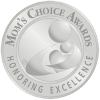
Mom's Choice Awards

Cathy Duffy's 102 Top Picks
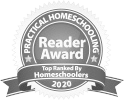
Practical Homeschooling Reader Award
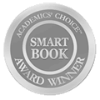
Academics' Choice Award Winner
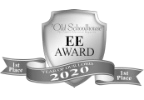
The Old Schoolhouse EE Award

Well-Trained Mind Top Recommendation
All About Reading is the Right Tool for Dyslexia
When Marie Rippel’s son was just 9 years old, he was diagnosed with severe dyslexia. Experts told her that he would never learn to read and spell. But, Marie and her son beat the odds... and so can you!
You see, it wasn’t that Marie’s son couldn’t read; he simply hadn’t been given the right tools. Today, All About Reading—the program Marie developed for her son—equips parents with everything they need for successful reading instruction at any level, without prior training.
Suitable for one-on-one or small group instruction, All About Reading is guaranteed to help your child succeed. And with our free lifetime support, you’ll never be alone on your journey. We’re always here to help; we’re just a phone call or an email away!
Is your child struggling with reading? Are you wondering if dyslexia could be the cause? The Symptoms of Dyslexia Checklist is designed to help you determine if your child has the signs of dyslexia. Download the Checklist now!
How to Get Started
All About Reading is Easy to Teach
Based on the Orton-Gillingham approach, All About Reading is a highly effective way to teach struggling readers and students with dyslexia. Our open-and-go lesson plans are easy to use, making teaching to read efficient and rewarding for you and your student. Step-by-step instructions remove the guesswork, guaranteeing improved reading skills.
All About Reading is unlike other programs because it has no gaps. This allows the student to learn everything they need before moving forward. The powerful multisensory approach engages students with sight, sound, and touch in every lesson. The program is mastery-based, so you monitor the progress of the student and proceed only after they have mastered the material. Moving through the curriculum comfortably and at the student’s pace keeps it fun and motivating. You will confidently teach one new lesson at a time, in as little as 20 minutes per day. It’s easy to get started! Download our placement test or choose a level to begin now.

All About Reading is Easy to Learn
Not all reading instruction works for students with dyslexia, but the right methods can be used to provide struggling readers with the skills they need to succeed. All About Reading’s simple step-by-step lesson plans are research-based and have helped thousands of kids with dyslexia learn to read with:
- A multi-sensory approach that actively involves students in the learning through sight, sound, and touch
- Hands-on experiences that develop strong foundations and enable long-term storage of learned information
- Instruction that is based on a child’s developmental level and ability rather than on age or grade level, ensuring success
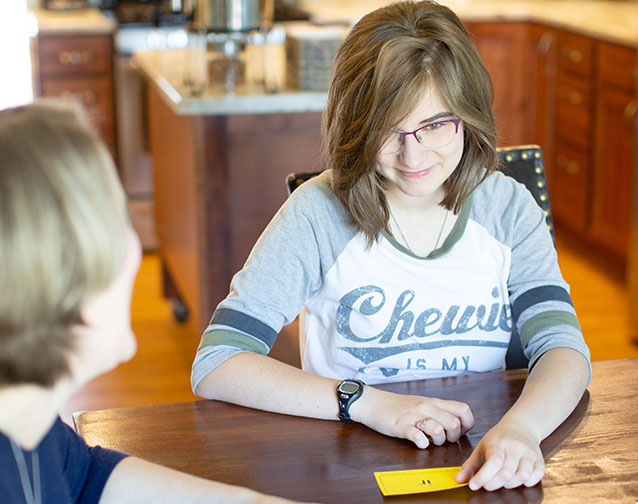
How Students Benefit from the All About Reading Program
As a teacher you can use All About Reading to empower your students to unlock their unique potential and enhance their reading skills. Students become excited as they progress at a comfortable developmental pace and grow in their reading ability. The program also:
- Develops a sense of achievement
- Builds a strong learning foundation
- Prepares for future learning
- Improves self-confidence
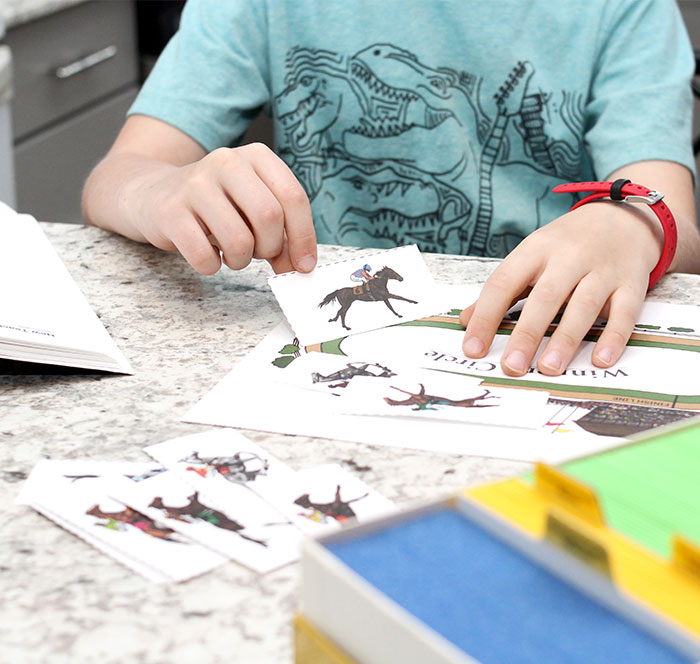
The Orton-Gillingham Approach for Dyslexia
The Orton-Gillingham approach has been a trusted resource for teaching students with dyslexia since the 1930s. Using structured lessons that engage multiple senses at once, the OG approach makes it easier for students to retain information as they learn to read.
This type of instruction has "important implications for treating reading disabilities and other developmental disorders," according to the director of Carnegie Mellon's Center for Cognitive Brain Imaging, Marcel Just. Those struggling to read can conserve their energy by being taught new concepts at their own pace, in the correct order, and in the same way every time.
Ready to help your child? Begin by selecting the appropriate reading level or download our placement test today!
What Parents Are Saying

Thank you for equipping me to do what professionals told me would not be possible. There is no better program than All About Reading!"
– Katie’s mom

Your program not only helped my son learn, it gave him the confidence in himself he had lost so many years ago."
– Michael’s mom

Having fun and being able to experience success day by day is very motivating, to mention much more enjoyable."
— Marianne, mom of seven kids with dyslexia
Our "Go Ahead and Use It" Guarantee
Check out all of the step-by-step lesson plans and reading and spelling tips for ONE FULL YEAR. Treat the program like your own, and learn everything the program has to offer.
If you purchase from us and decide it's not for you, simply send the package back (in any condition), and we'll refund your purchase price. No questions asked.
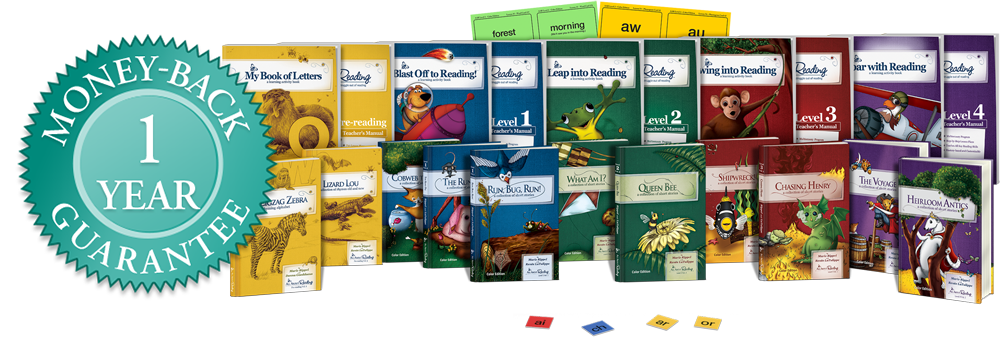
Have Questions?
Choosing the right reading program is an important decision! Check out our Frequently Asked Questions.
According to the International Dyslexia Association, "Dyslexia is a specific learning disability that is neurobiological in origin. It is characterized by difficulties with accurate and/or fluent word recognition and by poor spelling and decoding abilities. These difficulties typically result from a deficit in the phonological component of language that is often unexpected in relation to other cognitive abilities and the provision of effective classroom instruction. Secondary consequences may include problems in reading comprehension and reduced reading experience that can impede growth of vocabulary and background knowledge."
(Definition of Dyslexia. International Dyslexia Association. Retrieved April 28, 2021.)Dyslexia is thought to be one of the most common language-based learning disabilities. It is the most common cause of reading, writing, and spelling difficulties. Of people with reading difficulties, 70-80% are likely to have some form of dyslexia. It is estimated that between 5-10% of the population has dyslexia, but this number can also be as high as 17%.
(Frequently Asked Questions. Dyslexia Help at the University of Michigan. (2021). Retrieved April 28, 2021.)As you help your student, it can be helpful to understand what it is like to actually have dyslexia. A student with dyslexia may experience any of these issues:
- You may struggle to remember letter names and sounds, even after lots of practice.
- It can be hard to remember or understand what you read because your brain is working so hard to just decode the words.
- Words that were easy for you to read and spell one day may be difficult the next day.
- Your brain doesn’t automatically recognize words, even words that you have seen many times.
- It is difficult to finish school assignments.
- You may get very frustrated and even angry at yourself because things that seem so easy for everyone around you are so difficult for you.
Yes! The Orton-Gillingham approach uses multisensory methods that restructure how the brain works, making it possible for kids with dyslexia to learn to read and spell. Using multisensory instruction helps the neurons in the respective parts of the brain fire at the same time and wire together to create neural networks. These neural networks allow the brain to store and retrieve information much more effectively and efficiently. As neuroscientists say, "brain neurons that fire together, wire together."1 In short, with this approach, dyslexic students can be very successful with reading!
1 Sousa, D.A. (2017). How the brain learns. Thousand Oaks, CA: Corwin, a Sage Publishing Company.Although children with dyslexia need a lot of support and encouragement, our lightly scripted reading and spelling programs guide you every step of the way, with no special training required. We teach the phonics, rules, and strategies your student needs to become a proficient reader and speller for life. Our color-coded letter tiles and hands-on activities provide instruction through sight, sound, and touch in a logical and incremental manner. Explicit, step-by-step lessons are customizable, with lots of review to help the child’s learning stick.
First, be sure to use an Orton-Gillingham-based program like All About Reading. The Orton-Gillingham approach has successfully helped students with dyslexia and other reading challenges for over 80 years. An OG program makes learning to read easier with instruction that is multisensory, sequential, incremental, cumulative, individualized, based on phonograms, and explicit. Students with dyslexia need lots of academic and emotional support. And although kids with dyslexia are often very smart, they may need positive encouragement to persevere with reading and spelling. Children who are over-focused on their reading and spelling struggles may need help recognizing their unique talents and abilities to. Hang our free poster on your fridge as a reminder: 30+ Important Things That Tests Can’t Measure.
If a child has any difficulties with reading or spelling, see our reading and spelling placement tests to help you decide where to start in All About Reading and/or All About Spelling.
This is actually very common, because spelling is more difficult to master than reading. We teach reading and spelling separately for just this reason! You can focus on just the skill that your student needs to master. All About Spelling is a scripted, open-and-go program based on the Orton-Gillingham approach that teaches spelling in the most effective way possible.
If you’re putting in the time and effort to use a reading program with your student, you want to make sure that it works! We hear from grateful parents and tutors every day. Here are just a few reviews we have received from grateful parents:
- Angela shared, "I can’t believe the difference your curriculum has made for my 9-year-old daughter who has dyslexia. She can read well now and doesn’t cry every time it’s time for reading! Your curriculum has been such a blessing. Thank you!"
- Sophia shared, "My 9-year-old son, who has struggled with severe dyslexia is finally reading!! And the best part is that he loves the program so much, he even asks to do lessons on the weekends! Thank you, All About Reading."
- And another happy mom shared, "This program is so amazing! My dyslexic son said he has learned more in 10 lessons of All About Reading than he did in 7 years of public school! It's like a light bulb went on and he is finally understanding."
Yes! All About Reading and All About Spelling have worked well for both middle school students and teen learners. Older students who use All About Reading can skip activity book pages that seem "too young," but the lessons, word cards, fluency practice pages, and readers are appropriate at any age. The illustrations in our readers appeal to students of all ages, and our Letter Tiles App is perfect for older students. All About Spelling will work with older children with little or no modifications.
All About Reading is open-and-go for busy parents and teachers (no special training required!) and includes decoding skills, fluency, comprehension, vocabulary, and lots and lots of reading practice. It teaches more than 5500 words and has 133 beautifully illustrated stories to delight your student. One of the biggest differences between All About Reading and most other programs is that we teach reading and spelling separately. Children often progress more quickly in reading than spelling but with our single-subject approach, they can progress as quickly as possible in reading while taking as much time as they need to succeed in spelling.
Letter reversals issues are experienced by a significant percentage of students with dyslexia! Reversals that have become ingrained require consistent, daily practice over time to un-do. Download our free e-book How to Solve Letter Reversals to discover four methods you can use to work on tough reversal problems.
We would love to help! You can call us at 715-477-1976 or email us at support@allaboutlearningpress.com. We’re here to help!
Do you have more questions? Please get in touch! We're happy to help.



